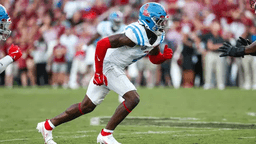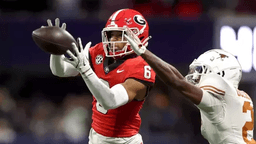Boston Celtics - Post 2024 NBA Draft
How do the Celtics looks after the 2024 NBA draft
By: Stephen Gertz · 1y

Photo: NBA.COM
If you are going to begin a series about where contending teams stand post the 2024 NBA Draft, what better place to start than with the defending champs – the Boston Celtics. For the purposes of defining “contending” this series will take at the two teams that battled it out in their respective conference finals. That would be Boston and the Indiana Pacers in the East, and the Dallas Mavericks and Minnesota Timberwolves in the West. Quick side note, after you are done reading this article, join the Boston Celtics channel in our community section of DraftNation.com.
But first, to analyze and evaluate each team’s position, we need to understand the financial/salary cap climate that every team in the league is operating in now that the calendar year has flipped to 2024-2025. Specifically, here is an overview of the penalties teams now face when they go over the first and second aprons.
When a team goes over the first apron at $178.132 million ($170.814 is the tax level):
- 100% salary match on trades (down from 125% for non-tax paying teams)
- Mid-level exception (MLE) reduced to $5 million from $12.85 million with a max two-year contract
- Cannot sign a player in the regular season via waivers if their previous salary was above the MLE
- Cannot acquire a player in a sign-and-trade if salary keeps them over the first apron
When a team goes over the second apron at $188.931 million:
- All penalties from the first apron
- Cannot use the MLE
- Cannot access the buyout market
- Cannot combine multiple player salaries into a trade
- Cannot utilize past trade exceptions or send out cash to finalize deals
- Cannot trade 1st round picks that are seven years into the future
- After hitting the second apron, if a team remains there for two out of the following four seasons, that 1st round pick will automatically be moved to the last pick of the draft (currently 30th)
A few notes on the CBA regarding 2nd round picks and two-way players:
- Teams can sign 2nd round picks to three- or four-year deals without going into cap space or using the MLE, which they previously had to.
- Teams allowed to roster three, two-way players instead of just two
I recognize that is a lot of dense information. But in a series devoted to analyzing and evaluating how these four contending teams chose to draft and spend their offseason thus far, it is important to understand that because all of them are staring down at least the first apron except for Indiana. With all of that out of the way, how have the Celtics fared?
Boston is one of three teams that is likely to pay out over $200 million in salary this season; the Phoenix Suns and Minnesota are the other two. They are well passed the second apron. But when you are the reigning champions and have all your key contributors under contract, all in their physical prime, times are good. With the Celtics so far above the second apron, drafting a player unlikely to play in the NBA this year would not really benefit them. Finding someone that can fill a rotation spot on a cheap contract was the objective for Boston during the draft, and they pretty much nailed it.
They used the 30th pick on former Creighton Bluejay and fifth-year wing, Baylor Scheierman. Scheierman was a Third-Team All-American last season and helped lead Creighton to a Sweet 16 appearance. He brings 162 games of collegiate experience to the table, and it is presumed that he can contribute right away. Scheierman has a chance to step into a role on the wing that the established role players – Al Horford, Sam Hauser, and Payton Pritchard – do not occupy.
He is a crafty lefty that showcased his outside shooting stroke and comfort as a playmaker and shotmaker off-the-dribble in his Vegas Summer League debut. Scheierman brings other skills to the table that will earn him playing time such as his willingness to defend and feel for setting screens. To that end, he exits them purposefully, finding open spots to move into depending on how the ball screen was defended. While unlikely to be charged with the same amount of ballhandling duties at Creighton, Schiereman’s vision and patience will enable him to find weakside cutters for easy baskets when he does have the ball.
While nothing may jump off the page about him, plug and play starters are not often selected with the last pick in the first round. What the Celtics did find is an experienced player that fills a role not currently occupied within their mostly defined rotation. Scheierman will be an effective player off the ball, can make plays and shots when he is more heavily involved, and will not bleed defensive value. Considering that he is likely to play less than 10 minutes per game and probably will not play in every game, that is all Boston needs from him.
I am sure they took a hard look at drafting Kyle Filipowski, but probably felt comfortable with their frontcourt rotation. Perhaps Hauser is the floor for a player like Filipowski, but the Celtics were not going to hand over all those minutes to a rookie. Especially, after they signed the former to a contract extension.
There was upside in former Kansas Jayhawk Johnny Furphy. From a positional standpoint, Furphy would have fit the bill. However, Boston will not be devoting minutes to any player that likely needs to play through mistakes and go through a few growing pains before being able to positively contribute. He may be the better player down the road, but the Celtics are more concerned about defending their title than what their team may look like in another five years.
I do think there was more upside in selecting Filipowski or Furphy at 30. That said, neither fits better into Boston’s timeline. They wanted a known quantity in a position that had rotation minutes available, and they got that in Scheierman. It is a low risk move that comes with the upside of helping to extend their championship window from a depth standpoint.
Final Grade: A-





Comments:
Log in or sign up to read and post comments.